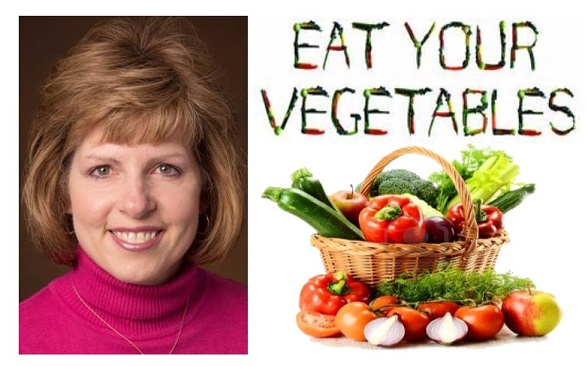Tomah Health Registered Dietitian & Certified Diabetes Educator Joan Kortbein, CD, CDE, RD
Did you know that eating seven or more servings of fruits and vegetables a day can reduce your risk of premature death by 42 percent? However, the Centers for Disease Control estimate that only 1 in 10 consumers eat enough produce every day. Most people find it easier to eat fruit because of its natural sweetness. However, preparing vegetables can be more of a challenge when you don’t feel as comfortable cooking or have limited time to experiment
Here are some tips that may help you:
STEAMING VEGETABLES – If you don’t have a vegetable steamer don’t worry. Prep veggies that have similar texture and cut them into similar sized pieces so they cook at the same rate. Bring a few inches of water to boil in a larger saucepan, place veggies in a steaming basket or colander that fits into the pan so you can still cover it. Cook them until tender or your preferred consistency. Keep in mind that steaming takes a little longer than boiling, and works the best with smaller amounts of vegetables. For more flavor add some herbs, minced garlic, toasted bread crumbs, chopped nuts, or drizzle with a vinaigrette before serving.
BOILING VEGETABLES – Boiling works the best with large root vegetables like potatoes, carrots, turnips and rutabagas. Use a larger pan and boil uncovered until the veggies are the consistency you like. The large root vegetables do the best if they are started in cold water, brought to a boil, then gently boiled until done. But most green vegetables and cauliflower should be added to water already boiling, and cooked with a more vigorous boil until tender.
SAUTE / STIR-FRIED VEGETABLES – This method of cooking vegetables caramelizes the natural sugars on the surface of the vegetables for a unique flavor. High heat is used with a small amount of added fat (healthy options include canola, peanut or olive oils). When stir-frying, use a wok and cook vegetables with different textures in different “batches” adding them together in the end – for example, cook chopped celery that is more fibrous in a different batch then mushrooms that will cook more quickly. Your vegetables will cook more uniformly if you keep stirring them while they are cooking, too. Sautéing is done in a skillet. Best to cook vegetables in smaller batches; if you cook too many at a time they will steam rather than sauté or stir-fry. For more flavor add minced garlic and chopped onions, or for an Asian flavor add minced garlic and ginger.
BRAISING VEGETABLES – Braising means you are cooking vegetables more slowly over low heat in a small amount of broth or dry wine. It works the best with vegetables that are more fibrous and tough. For even more flavor you can start by sautéing the vegetables in olive oil or butter then simmering over low heat in broth until tender.
GRILLING VEGETABLES – The higher heat used for grilling can caramelize the natural sugars in the vegetables. Charcoal grills provide a higher heat generally, but usually not a consistent heat like that provided by a gas grill. It is recommended to use a grill basket so the smaller pieces of vegetables don’t fall through the grill rack. It is good to rotate/mix the vegetables in a grill basket frequently for more even cooking, but don’t fill the basket too full as they are more likely to be steamed instead of grilled. Coat the veggies with oil before grilling or add a marinade for a different flavor. Vegetables (other than eggplant) will not absorb marinades so you can just coat them right before cooking.
ROASTING VEGETABLES – Prep veggies by cutting into similar-sized pieces and brushing with a vegetable oil. Roast on a lightly oiled sheet pan (you can line your pan with aluminum foil for easy clean up) at 450 F. Use a spatula or tongs to flip the vegetables 1-2 times while cooking. The cooking time will vary depending on the vegetable you are cooking.
It is important to keep in mind that numerous studies conducted over decades have shown that eating a diet rich in fruits and vegetables, regardless if they are organic or conventionally grown, gives us so many health benefits. So while there is a lot of misinformation out there about what we eat, the research is clear on eating fruits and vegetables. Enjoy!
Read Past Editions of Nutrition Notes CLICK HERE
